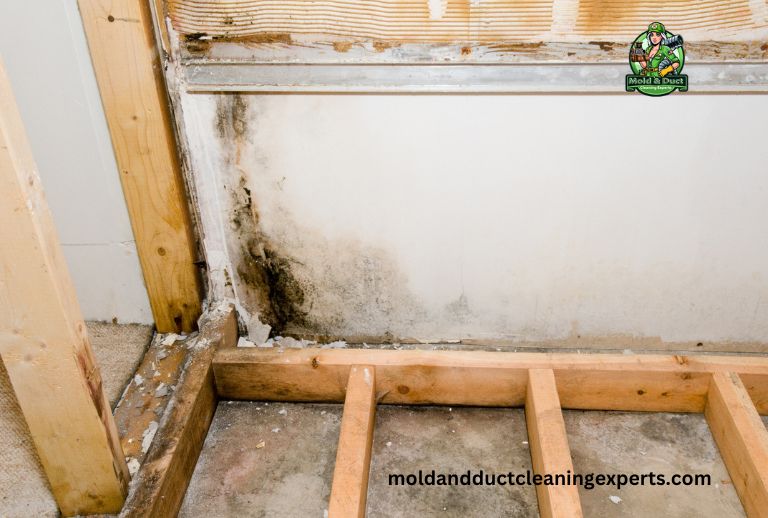
Mold on wood furniture is a significant concern, not only for the integrity of the furniture but also for the health of individuals exposed to it. Mold, a type of fungus thriving in moist environments, can cause structural damage to wood and pose health risks such as allergic reactions, respiratory issues, and more. By understanding the dangers of mold on wood furniture, homeowners can take proactive steps to protect their furniture and their health. This blog post will provide comprehensive information on identifying, preventing, and removing mold on wood furniture, ensuring that your home remains safe and comfortable.
Causes of Mold on Wood Furniture
Mold on wood furniture is primarily caused by conditions that favor its growth, such as:
- Excess humidity: High indoor humidity levels can lead to condensation and moisture accumulation on wood surfaces.
- Poor ventilation: Inadequate airflow can trap moisture on or near wood furniture, creating an ideal environment for mold.
- Water damage: Spills, leaks, or flooding can saturate wood, making it vulnerable to mold growth].
- Lack of insulation: Furniture placed against poorly insulated exterior walls can restrict airflow and cause condensation, leading to mold.
- Warmth: Mold thrives in warm conditions, often found in consistently damp and dark areas.
Health Risks Associated with Mold on Wood Furniture
Mold on wood furniture is not just an aesthetic issue; it poses several health risks that can affect individuals differently. Allergic reactions are common and can include symptoms like sneezing, runny nose, red eyes, and skin rash. People with asthma or respiratory conditions may experience more severe reactions, such as difficulty breathing or asthma attacks.
Long-term mold exposure can lead to more serious health problems. For instance, certain types of mold produce mycotoxins, which can be harmful when inhaled or ingested. Prolonged exposure to these toxins can affect the immune system and lead to chronic health issues.
Here’s a quick list of potential health risks from mold on wood furniture:
- Allergic reactions
- Respiratory issues
- Asthma exacerbation
- Immune system suppression
- Potential toxic effects from mycotoxins
Types of Mold Commonly Found on Wood Furniture
Several types of mold can grow on wood furniture, each with its own characteristics and potential health impacts. Allergenic molds, such as Aspergillus and Penicillium, are commonly found on damp wood and can cause allergic reactions or asthma in sensitive individuals.
Toxic molds, like Stachybotrys chartarum, also known as black mold, are particularly concerning. Although not all black-colored molds are toxic, Stachybotrys produces mycotoxins that can be dangerous to human health, especially when present in large quantities.
Signs of Mold Infestation on Wood Furniture
Identifying mold infestation early on wood furniture is key to preventing its spread and protecting your health. Here are some signs that indicate the presence of mold:
- Discoloration: Mold can appear as spots in various colors, such as black, white, green, or yellow.
- Musty odor: A stale or musty smell is often associated with mold presence.
- Texture changes: Mold may cause the wood surface to feel slimy or fuzzy.
DIY Mold Removal Techniques for Wood Furniture
For non-toxic mold and smaller infestations, you can use household items like vinegar or baking soda to clean mold off wood furniture. Or you can expose furniture to sunlight to inhibit mold growth and kill mold spores. However, for larger or toxic mold problems, it’s best to contact professionals.
Here are some DIY mold removal techniques:
Safety First:
- Wear protective gloves, eyewear, and a mask to prevent inhaling spores.
- Ensure the room is well-ventilated.
Cleaning Solutions:
- White Vinegar: Apply undiluted vinegar to the moldy area, let it sit for an hour, then wipe clean.
- Baking Soda: Mix baking soda with water to form a paste, apply to the mold, let it dry, then scrub off.
- Hydrogen Peroxide: Spray 3% hydrogen peroxide on the mold, let it sit for 10 minutes, then scrub.
Procedure:
- Identify the moldy areas on your furniture.
- Choose a cleaning solution that is safe for the wood finish.
- Apply the solution using a soft brush or cloth.
- Gently scrub the mold away.
- Wipe the area clean with a damp cloth.
- Dry the furniture thoroughly to prevent future mold growth.
Precautions:
- Test the cleaning solution on a small, inconspicuous area first.
- Do not mix cleaning agents, as this can create dangerous fumes.
Professional Mold Remediation Services
Sometimes, the mold problem on wood furniture can be too extensive or dangerous to handle on your own. In such cases, it’s best to seek professional mold remediation services. Here’s why:
- A professional can assess the extent of the mold problem.
- They can provide a detailed plan for removal and prevention.
- Professionals have the training and equipment to safely remove mold.
- They can identify the mold species and use the most effective treatment.
- Experts ensure that all mold, including hidden growth, is removed.
- They can also address the source of moisture to prevent future infestations.
- Professional remediation protects you from exposure to harmful spores.
- They follow strict safety protocols to protect your health.
When to Call a Professional
Experts have the right equipment and expertise to safely remove mold. Call a professional for effective mold removal when:
- The mold covers a large area (more than 10 square feet).
- You suspect toxic mold.
- There is a risk of structural damage to the furniture.
Protect Your Home with Expert Mold Removal Services
Protect your home and health by enlisting the help of our Mold & Duct Cleaning Experts. Our team specializes in identifying, treating, and preventing mold on wood furniture, ensuring a clean and safe environment. With the latest tools and a commitment to excellence, we provide solutions that not only remove existing mold but also prevent future growth.
Don’t let mold put your health and furniture at risk. Reach out to us for professional, reliable service that gives you peace of mind and preserves the beauty and integrity of your furniture. Act now for a mold-free home!
FAQs
Should I Throw Out Moldy Furniture?
Moldy furniture should be discarded if it’s structurally damaged or if cleaning and restoration aren’t possible. If you’re allergic or concerned about health risks, replacing it is safer.
Can Moldy Wood Furniture be Saved?
Moldy wood furniture can often be saved unless the mold has caused deep or structural damage. Cleaning with vinegar or baking soda and ensuring thorough drying may help salvage the furniture.
What Does Toxic Mold Look Like on Wood?
Moldy wood furniture can often be saved unless the mold has caused deep or structural damage. Cleaning with vinegar or baking soda and ensuring thorough drying may help salvage the furniture.

